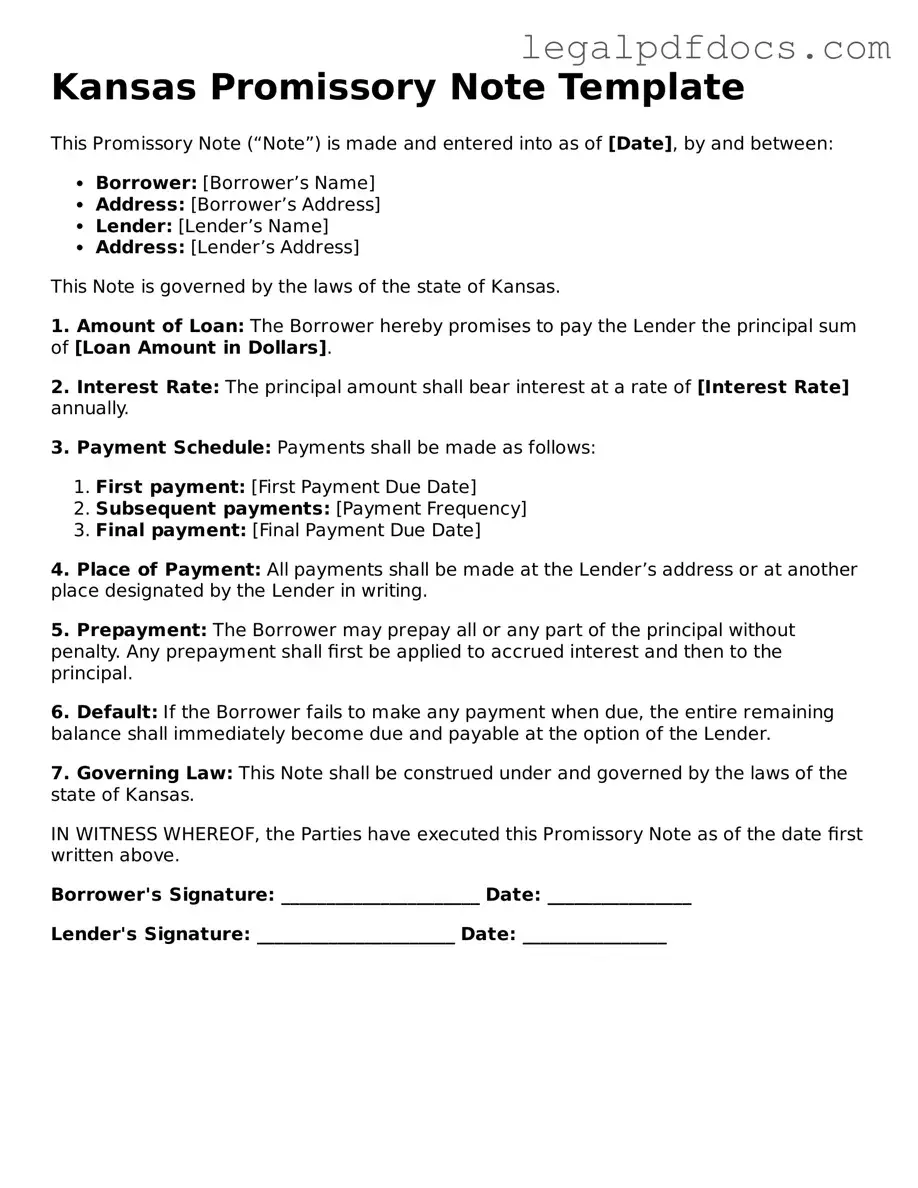Official Promissory Note Form for Kansas
A Kansas Promissory Note is a legal document that outlines a borrower's promise to repay a loan to a lender under specified terms. This form serves as a crucial tool for establishing clear expectations regarding repayment, interest rates, and other conditions. For those looking to formalize a loan agreement, filling out the form is essential; click the button below to get started.
Open Promissory Note Editor Here
